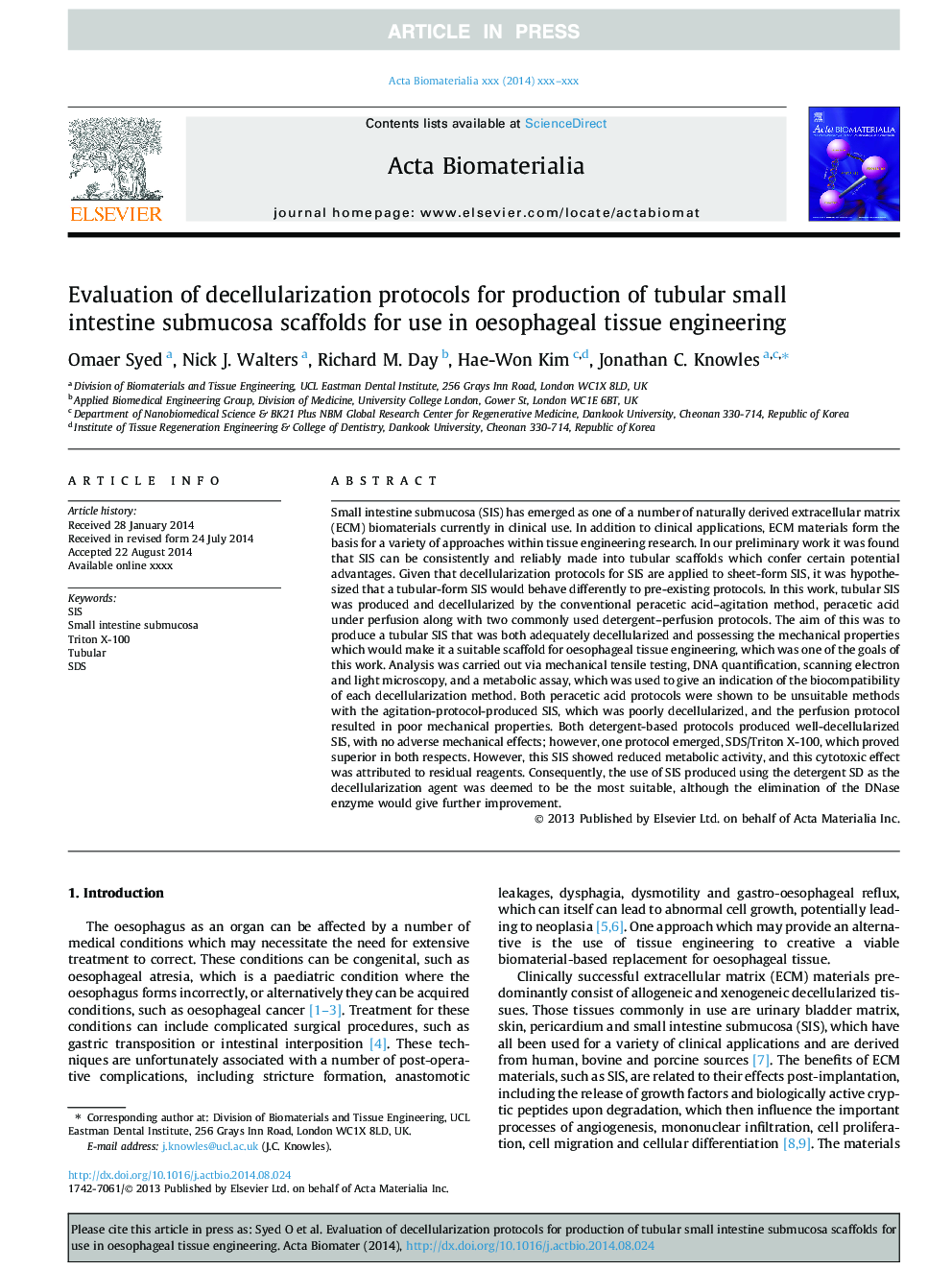| کد مقاله | کد نشریه | سال انتشار | مقاله انگلیسی | نسخه تمام متن |
|---|---|---|---|---|
| 6483839 | 33 | 2014 | 12 صفحه PDF | دانلود رایگان |
عنوان انگلیسی مقاله ISI
Evaluation of decellularization protocols for production of tubular small intestine submucosa scaffolds for use in oesophageal tissue engineering
ترجمه فارسی عنوان
بررسی پروتکل های انعقاد پذیری برای تولید داربست های زیربوسی روده کوچک لوله ای برای استفاده در مهندسی بافتی پستان
دانلود مقاله + سفارش ترجمه
دانلود مقاله ISI انگلیسی
رایگان برای ایرانیان
کلمات کلیدی
موضوعات مرتبط
مهندسی و علوم پایه
مهندسی شیمی
بیو مهندسی (مهندسی زیستی)
چکیده انگلیسی
Small intestine submucosa (SIS) has emerged as one of a number of naturally derived extracellular matrix (ECM) biomaterials currently in clinical use. In addition to clinical applications, ECM materials form the basis for a variety of approaches within tissue engineering research. In our preliminary work it was found that SIS can be consistently and reliably made into tubular scaffolds which confer certain potential advantages. Given that decellularization protocols for SIS are applied to sheet-form SIS, it was hypothesized that a tubular-form SIS would behave differently to pre-existing protocols. In this work, tubular SIS was produced and decellularized by the conventional peracetic acid-agitation method, peracetic acid under perfusion along with two commonly used detergent-perfusion protocols. The aim of this was to produce a tubular SIS that was both adequately decellularized and possessing the mechanical properties which would make it a suitable scaffold for oesophageal tissue engineering, which was one of the goals of this work. Analysis was carried out via mechanical tensile testing, DNA quantification, scanning electron and light microscopy, and a metabolic assay, which was used to give an indication of the biocompatibility of each decellularization method. Both peracetic acid protocols were shown to be unsuitable methods with the agitation-protocol-produced SIS, which was poorly decellularized, and the perfusion protocol resulted in poor mechanical properties. Both detergent-based protocols produced well-decellularized SIS, with no adverse mechanical effects; however, one protocol emerged, SDS/Triton X-100, which proved superior in both respects. However, this SIS showed reduced metabolic activity, and this cytotoxic effect was attributed to residual reagents. Consequently, the use of SIS produced using the detergent SD as the decellularization agent was deemed to be the most suitable, although the elimination of the DNase enzyme would give further improvement.
ناشر
Database: Elsevier - ScienceDirect (ساینس دایرکت)
Journal: Acta Biomaterialia - Volume 10, Issue 12, December 2014, Pages 5043-5054
Journal: Acta Biomaterialia - Volume 10, Issue 12, December 2014, Pages 5043-5054
نویسندگان
Omaer Syed, Nick J. Walters, Richard M. Day, Hae-Won Kim, Jonathan C. Knowles,
